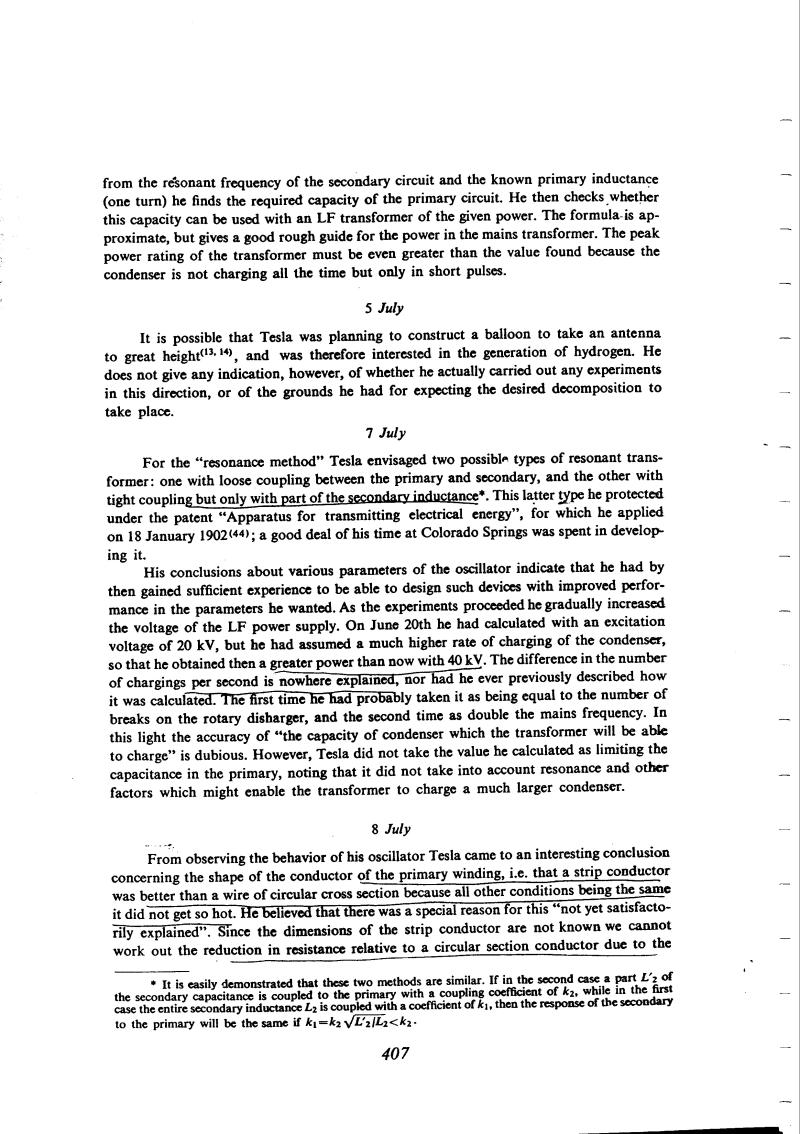July 7
For the âresonance methodâ Tesla envisaged two possible types of resonant transformer: one with loose coupling between the primary and secondary, and the other with tight coupling but only with part of the secondary inductance*. This latter type he protected under the patent âApparatus for transmitting electrical energyâ, for which he applied on 18 January 1902(44); a good deal of his time at Colorado Springs was spent in developing it.
His conclusions about various parameters of the oscillator indicate that he had by then gained sufficient experience to be able to design such devices with improved performance in the parameters he wanted. As the experiments proceeded he gradually increased the voltage of the LF power supply. On June 20th he had calculated with an excitation voltage of 20 kV, but he had assumed a much higher rate of charging of the condenser, so that he obtained then a greater power than now with 40kV. The difference in the number of chargings per second is nowhere explained, nor had he ever previously described how it was calculated. The first time he had probably taken it as being equal to the number of breaks on the rotary discharger, and the second time as double the mains frequency. In this light the accuracy of âthe capacity of condenser which the transformer will be able to chargeâ is dubious. However, Tesla did not take the value he calculated as limiting the capacitance in the primary, noting that it did not take into account resonance and other factors which might enable the transformer to charge a much larger condenser.


